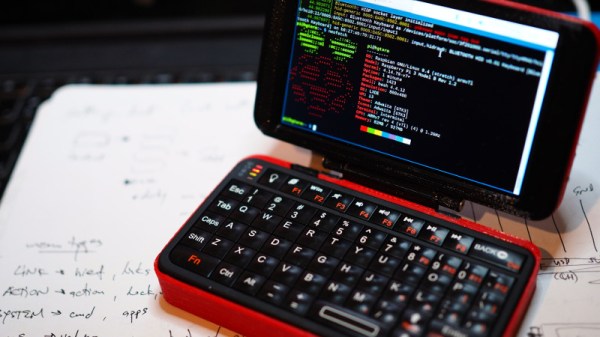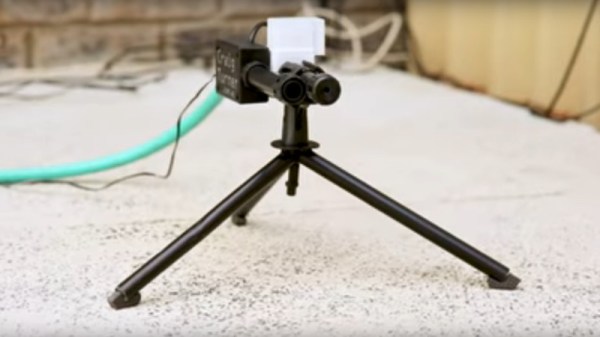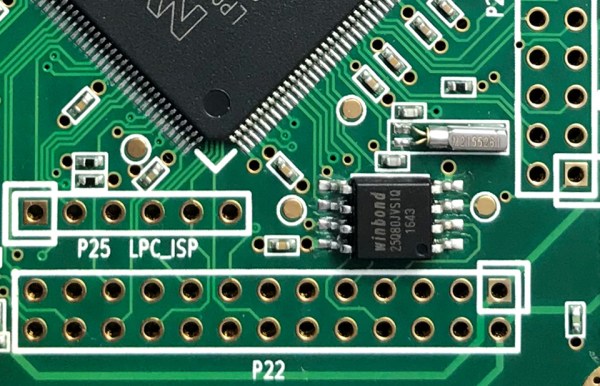Back in October 2018, a bombshell rocked the tech industry when Bloomberg reported that some motherboards made by Supermicro had malicious components on them that were used to spy or interfere with the operation of the board, and that these motherboards were found on servers used by Amazon and Apple. We covered the event, looking at how it could work if it were true. Now seven months have passed, and it’s time to look at how things shook out.
Month: May 2019
This Is The Raspberry Pi Mini Laptop That We Want
In the seven years since the Raspberry Pi was first launched to an expectant audience we have seen many laptops featuring the fruit-themed single board computers. Some of them have been pretty jaw-dropping in their quality, so for a new one to make us stop and gape it needs to be something really special. On cue, here comes [Igor Brkić] with one of the neatest efforts we’ve seen, a high quality Pi laptop that’s smaller in frontal area than many smartphones.
At its heart is a Pimoroni Hyperpixel touchscreen HAT, and a Pi sitting behind it that has been stripped of all bulky connectors to reduce its height. The keyboard is a mini Bluetooth affair, and power comes courtesy of a deconstructed USB power bank with a lithium-ion pouch cell. The whole is contained within a neatly designed 3D-printed clamshell enclosure, making for a tiny and very neat laptop. We want one, and now you probably do too. (We wouldn’t say “no” to some level shifters and a GPIO port…)
If we had to pick another high-quality Pi laptop to compare this one with, it would have to be this one with a Psion-inspired hinge.
In This Aussie’s Back Yard, No Cat Is Safe From An Automated Soaking!
Some of us here at Hackaday are cat lovers, but we also understand that a plethora of unwanted cats using a suburban back garden can be bothersome, and a few years ago we featured a project from Aussie YouTuber [Craig Turner], in which he created a motion-detecting water spray for use as a relatively harmless cat repellent. Now he’s back with an updated version which is a little slicker and easier to make.
At its heart is the same PIR-turns-on-water operation, but this time there is a solenoid valve and purpose-built nozzle instead of a car central locking actuator and a lawn sprayer. Doing the electronic work is an off-the-shelf PIR module, so there is no longer any need to hack a security PIR detector. Add in some pipe sections and PTFE tape with a bit of hot glue, and the result is a far more professional and streamlined device. The video gives a full run-down on construction, though we notice he neglected to emphasise the polarity of his protection diode so keep an eye out if you follow his example.
So if the thought of a continuous supply of free feline company courtesy of your neighbours is not for you then now you are equipped to send them packing. The latest video incarnation of the project is below the break, but if you are in search of the original then you can go back to our coverage at the time.
Continue reading “In This Aussie’s Back Yard, No Cat Is Safe From An Automated Soaking!”
LED Panel Lamp Is A Great Way To Use Protoboard
It’s now possible to source chip-on-board LED modules that have huge light output in a simple, easy to use package. However they can have major power requirements, and cheaper modules are also susceptible to dead spots. [Heliox] put together a great LED lamp design the old-school way, showing there’s more than one way to get the job done.
Standard SMD LEDs are the order of the day here. The LEDs are laid out on protoboard in neat rows, making them easy to solder in place. This also makes power distribution a cinch, with the copper traces carrying the power to each row. Power is courtesy of 18650 lithium batteries installed in the back of the 3D printed housing. A GoPro-style mount is printed as part of the case, allowing the lamp to be easily mounted in a variety of ways.
It’s a quick, cheap and easy way to build a versatile LED lamp. With a diffuser installed and integrated USB charging, we could see this making an excellent portable device for on-the-go videographers or technicians. We’ve seen [Heliox]’s LED creations before, too. Video after the break.
Continue reading “LED Panel Lamp Is A Great Way To Use Protoboard”
Analog Failures On RF Product Cause Production Surprise
A factory is a machine. It takes a fixed set of inputs – circuit boards, plastic enclosures, optimism – and produces a fixed set of outputs in the form of assembled products. Sometimes it is comprised of real machines (see any recent video of a Tesla assembly line) but more often it’s a mixture of mechanical machines and meaty humans working together. Regardless of the exact balance the factory machine is conceived of by a production engineer and goes through the same design, iteration, polish cycle that the rest of the product does (in this sense product development is somewhat fractal). Last year [Michael Ossmann] had a surprise production problem which is both a chilling tale of a nasty hardware bug and a great reminder of how fragile manufacturing can be. It’s a natural fit for this year’s theme of going to production.
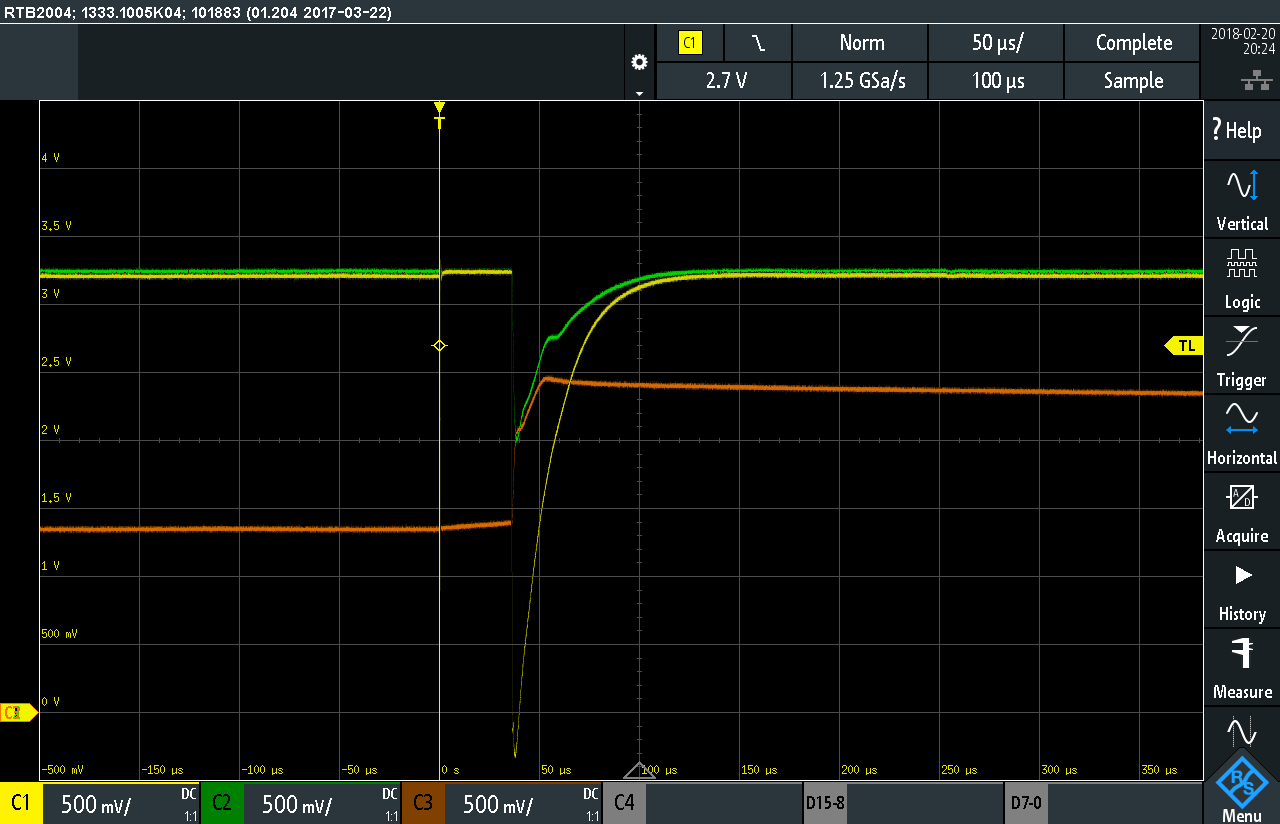
The saga begins with [Michael] receiving an urgent message from the factory that an existing product which had been in production for years was failing at such a high rate that they had stopped the production line. There are few worse notes to get from a factory! The issue was apparently “failure to program” and Great Scott Gadgets immediately requested samples from their manufacturer to debug. What follows is a carefully described and very educational debug session from hell, involving reverse engineering ROMs, probing errant voltage rails, and large sample sizes. [Michael] doesn’t give us a sense for how long it took to isolate but given how minute the root cause was we’d bet that it was a long, long time.
The post stands alone as an exemplar for debugging nasty hardware glitches, but we’d like to call attention to the second root cause buried near the end of the post. What stopped the manufacturer wasn’t the hardware problem so much as a process issue which had been exposed. It turned out the bug had always been reproducible in about 3% of units but the factory had never mentioned it. Why? We’d suspect that [Michael]’s guess is correct. The operators who happened to perform the failing step had discovered a workaround years ago and transparently smoothed the failure over. Then there was a staff change and the new operator started flagging the failure instead of fixing it. Arguably this is what should have been happening the entire time, but in this one tiny corner of the process the manufacturing process had been slightly deviated from. For a little more color check out episode #440.2 of the Amp Hour to hear [Chris Gammell] talk about it with [Michael]. It’s a good reminder that a product is only as reliable as the process that builds it, and that process isn’t always as reliable as it seems.
LED Jewelry Makes Neat Use Of Brass
Wearable electronics can be both fun and fashionable. However, there are certain challenges involved in neatly integrating electronic components in a way that is both functional and comfortable for the wearer. In this vein, [Jiri Praus] has managed to create some glowing earrings that are remarkably simple to boot.
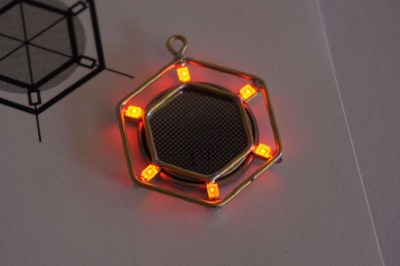
The earrings start out with brass rod, bent with pliers and soldered at the ends. By following a paper template, it’s possible to get neat and accurate bends by hand, which is necessary to make a matching pair. Through careful design, the brass rods are soldered to the LEDs, and more rod is then used to create an integrated holder for a coin cell battery, which powers the lights.
Thanks to [Jiri]’s smart designs — which we’ve featured before in the form of a blooming wireframe tulip — no wires are needed. The brass rods which make up the body of the jewelry also act as the conductors to pass current to the LEDs. The internal resistance of the coin cell battery also eliminates the need for an in-line resistor. In combination, this serves to create a simple and attractive finished product that should shine for several hours.
We’ve seen other LED earring designs before, too. There are plenty of ways to experiment with glowing jewelry, and if you’ve done something novel, be sure to let us know.
Video Doorbell Focuses On Quality, Aesthetic
One of the most popular futurist tropes of the 20th century was the video intercom. Once this technology was ready, it would clearly become a mainstay of modern living overnight. Our lived reality is however somewhat different. For [MisterM], that simply wouldn’t do, so he set about producing a retro-themed video doorbell that is sure to be the envy of the neighbourhood.
Not one to settle for second best, [MisterM] wanted to focus on quality in video and sound. A Microsoft LifeCam 3000HD handles video and audio capture, with a Raspberry Pi 3B+ providing plenty of grunt to run the show. The Pimoroni pHAT BEAT add-on provides audio output. It’s all integrated into a 1980s vintage intercom, which is painted a deep shade of maroon for an extra classy look. Further parts are integrated into a classic Sony tape deck, with LEDs shining out from under the cassette door for added visual appeal.
The doorbell works by making calls to Google Duo, which allows the user to answer the door from anywhere in the house, or indeed – anywhere with an Internet connection! [MisterM] reports this has already proved useful for communicating with couriers delivering packages to the house. There’s also a standard wireless doorbell and chime integrated into the unit which alerts those within the house in the usual way.
It’s a project that is both highly functional and looks particularly swish. Integrating new brains into old-school enclosures is a great way to give your project a cool look. These aircraft surplus clocks are a great example. Video after the break.
Continue reading “Video Doorbell Focuses On Quality, Aesthetic”


